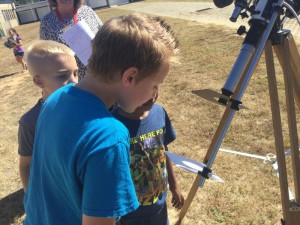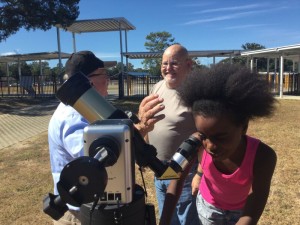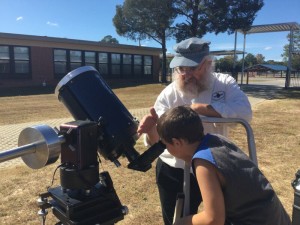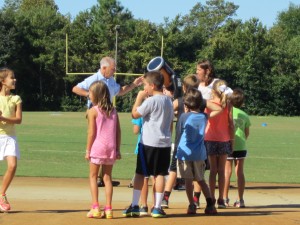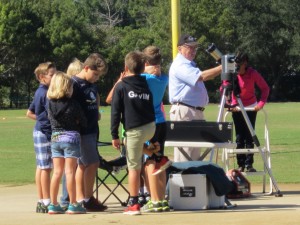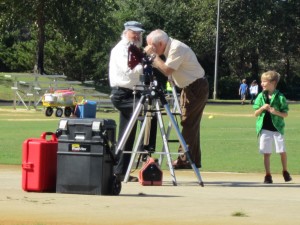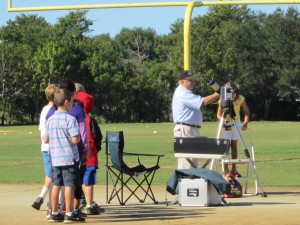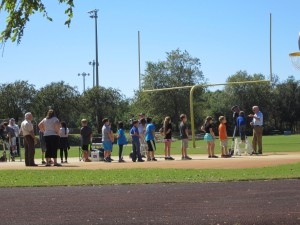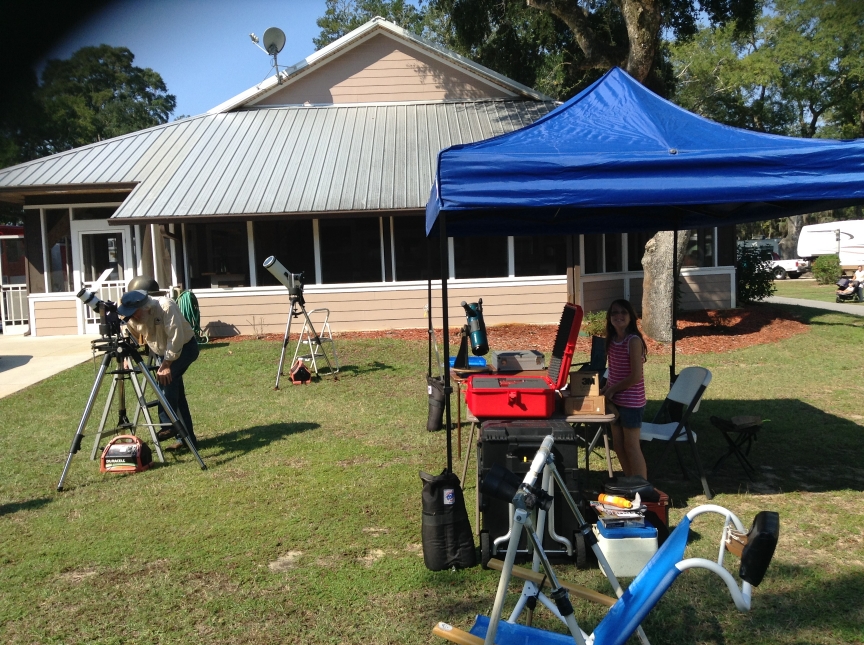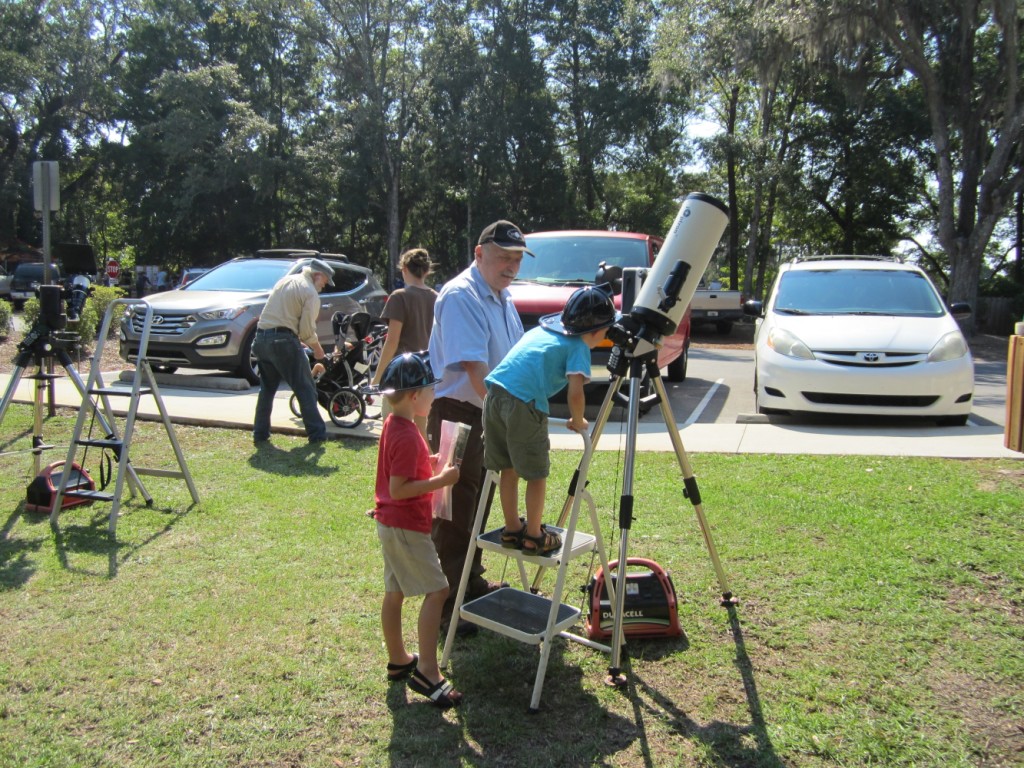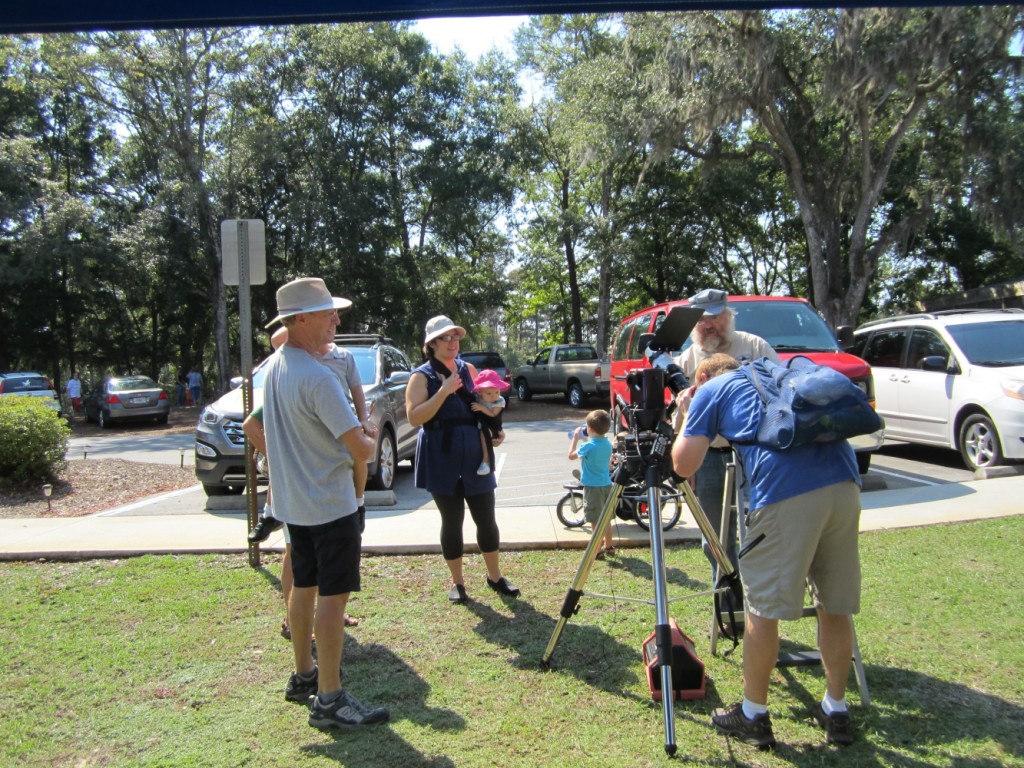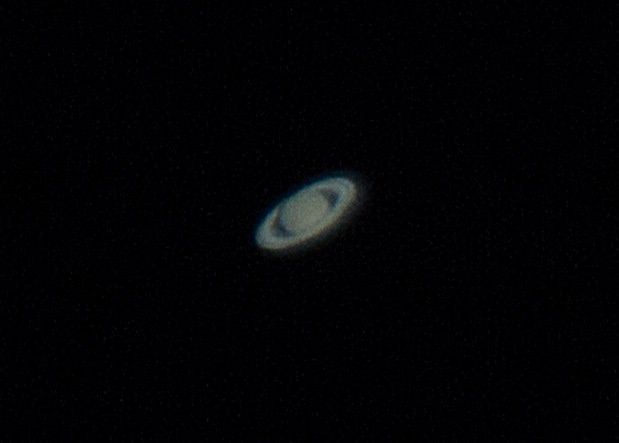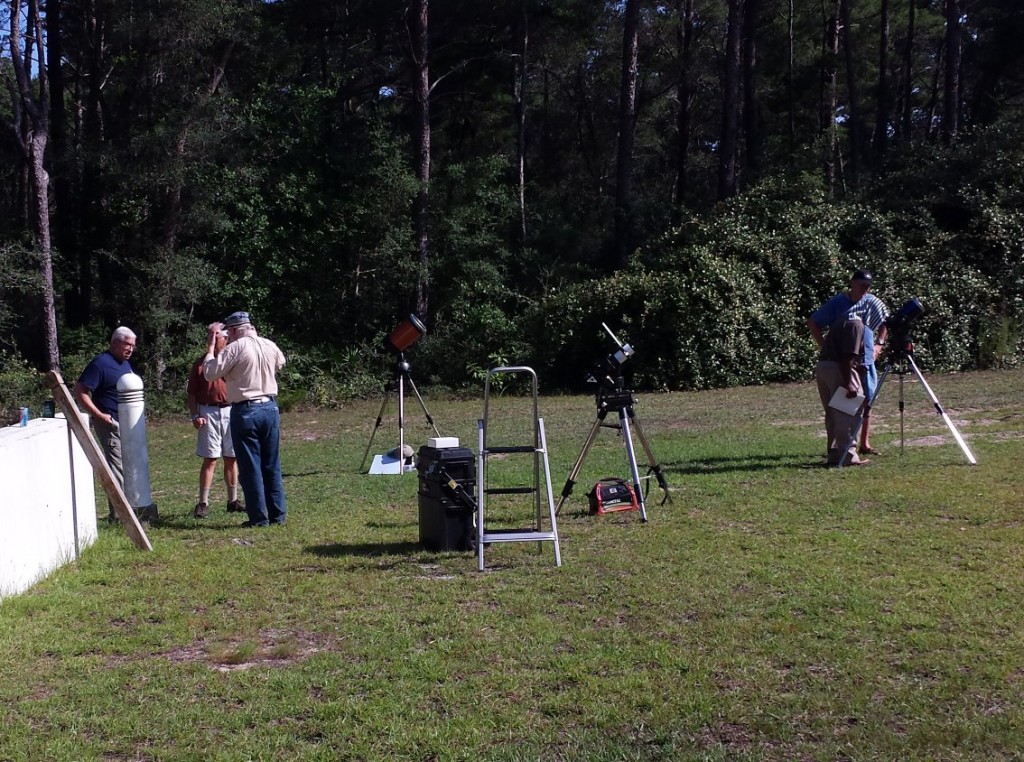The 2015 edition of International SUN Day was the first that the club actively participated in. Luckily, the day started off clear (and warm) and stayed fairly clear for most of the event. It did not stay warm.
By the time Bass Pro-Shops opened their doors for business, Dean Covey and Tom Haugh had solar telescopes up and running. They were joined a short time later by member Chuck Lynch and then Tony Russo joined the group rounding out the club participation.
The suggested location for our setup provided a clear view of the sky, absent any shadows from nearby buildings and trees. A prominent sun spot group was easily visible on Dean’s 8″ filtered Meade. The H-alpha view of the Sun started off the day rather unimpressive but later a large prominence rose up, seemingly, just for the occasion.
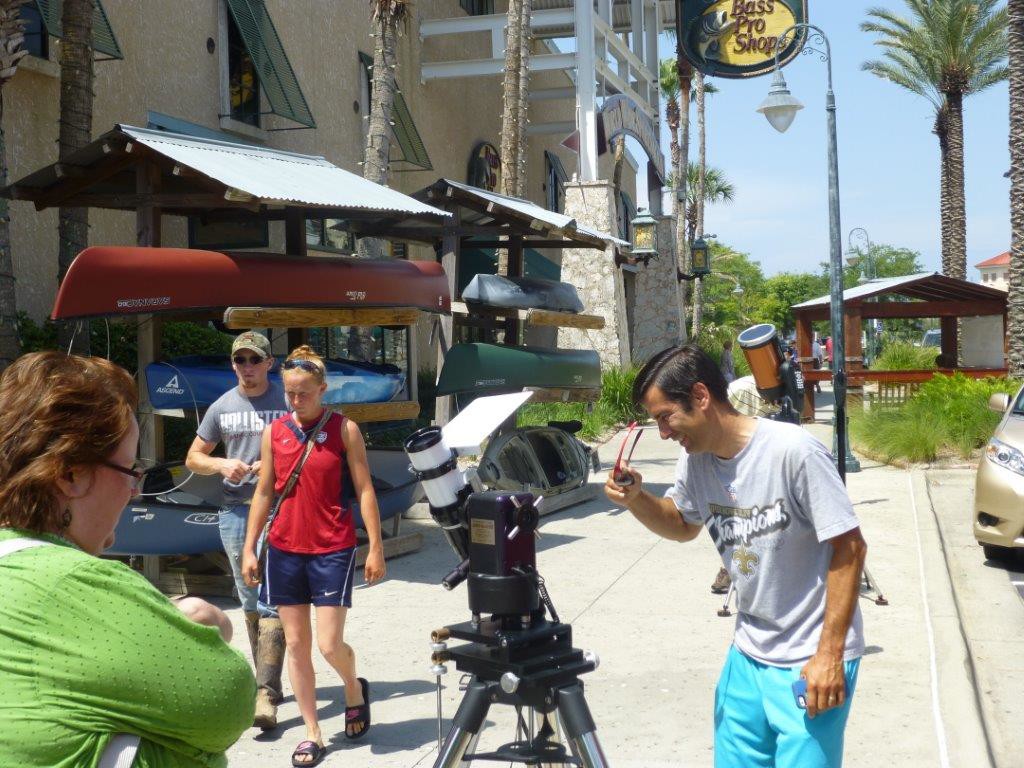
The location also provided a steady stream of public, most of whom took advantage of the club equipment and took a look at the guest of honor, the Sun. Several of our guest observers told us they saw the event advertised in the paper and made the trip just to take their first look at the Sun through a telescope. We handed out quite a few of our star gaze schedules and a couple of guests said that they would be attending the coming June meeting at the observatory.
In addition to the day being the summer solstice, it was also Father’s day. It is amazing how many apparent Fathers left Bass Pro-Shops with new fishing rods.
Throughout the day, clouds and thunderstorms on the eastern horizon threatened the event but stayed away until about 4:00 PM. Although it didn’t rain on us, the clouds moved in quite quickly bringing an end to the observing. Since this was our 3rd event of the week that involved Solar viewing and the necessary exposure to the daytime heat, we took this opportunity to call it a day and wrap up.
We would like to thank club member and Bass Pro-Shop employee, Gary Feduccia, for arranging the location for the event and for checking in with us throughout the day to make sure no one succumbed to the heat. He also provided the photography. We would also like to thank the Bass Pro-Shops staff for their warm welcome and for their permission to use the location.
